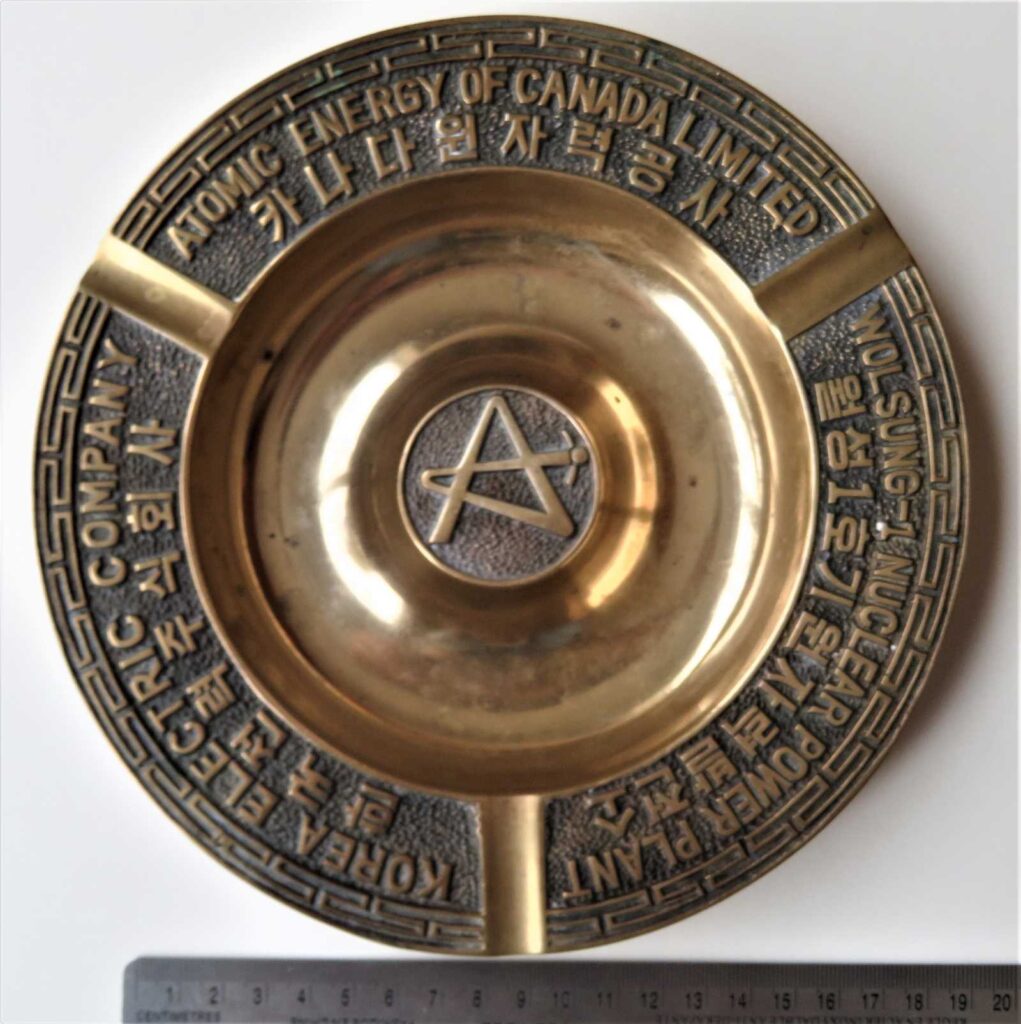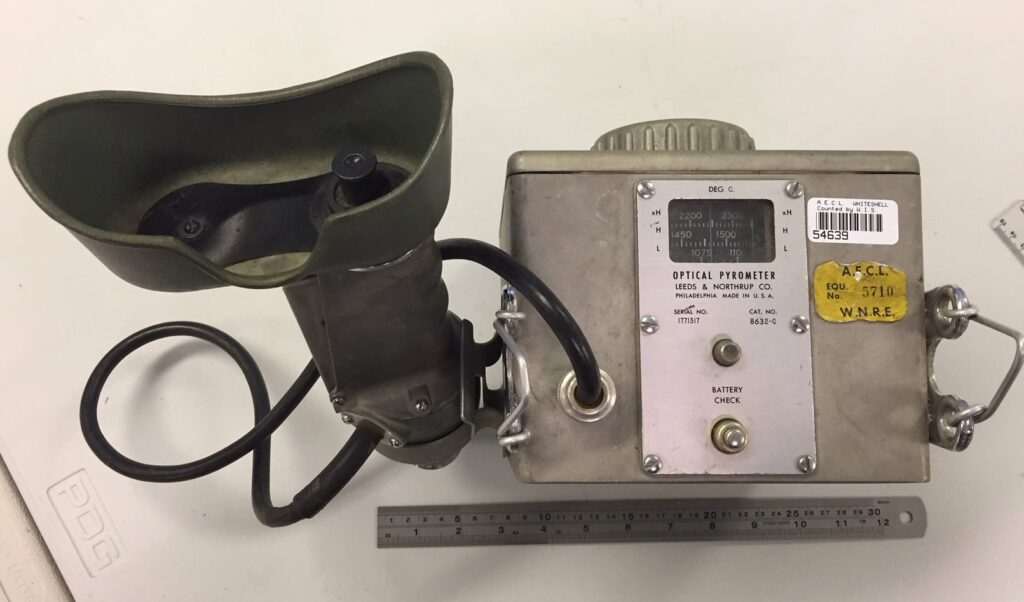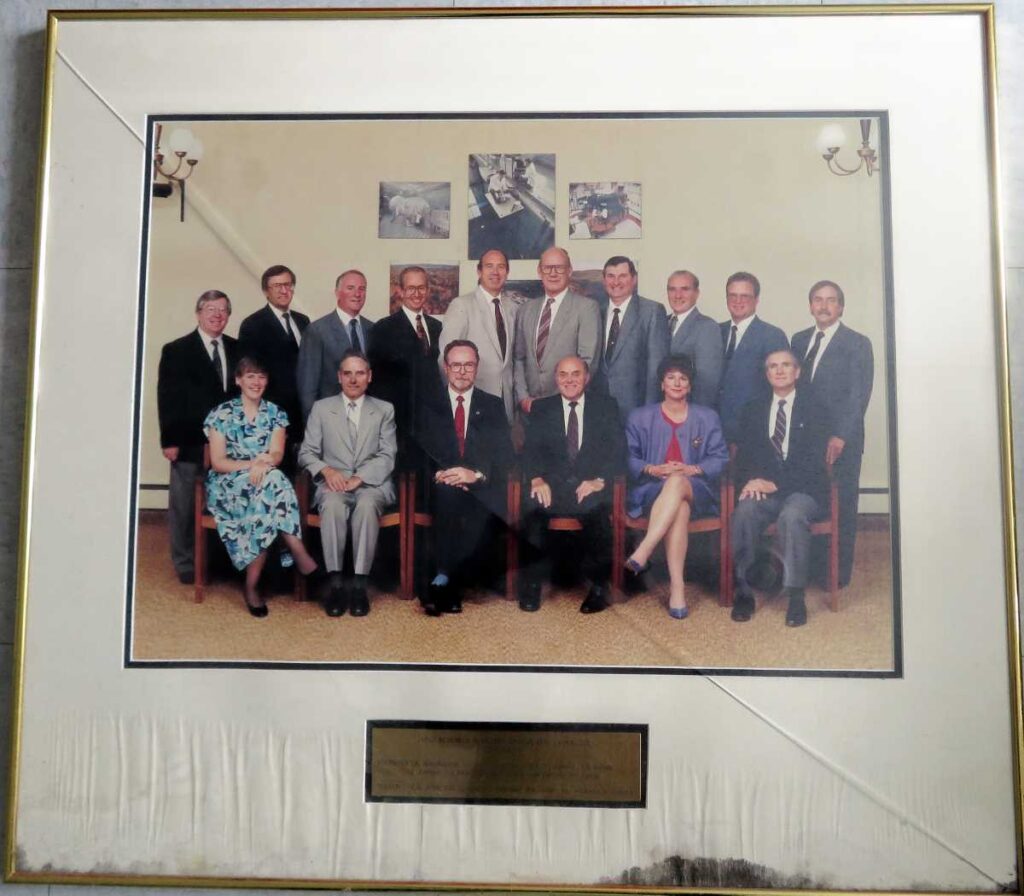A 57cm wide by 39 cm deep by 40 cm tall model of a nominal 1000 MW Advanced CANDU Reactor (ACR-1000) supplemented by a wind turbine array and coupled to a NuWind electrolysis plant for the production of hydrogen and heavy water as well as feeding power to the grid. The unit is enclosed in an acrylic dust cover. To recognize his contributions to heavy-water and hydrogen technology, this model of the NuWind concept was presented to Alistair Miller in 2005 when he made the transition at CRNL from employee to a researcher emeritus.







